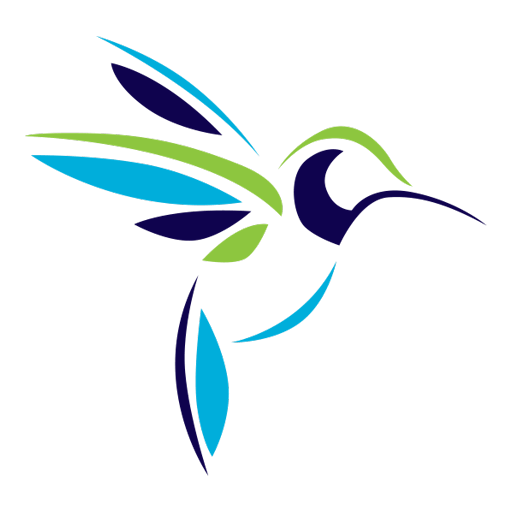Poverty Reduction
Prince Edward County, Ontario, Canada.
Vital Signs Data

Updated December 29, 2023
Income is perhaps the most important social determinant of health. Level of income shapes overall living conditions, affects psychological functioning and influences health-related behaviours such as quality of diet, extent of physical activity, smoking and excessive alcohol use. (Social Determinants of Health)
Common indicators to measure less poverty in communities include: income/poverty rate, ability to gain employment, access to quality education, access to affordable housing, access to affordable childcare, and access to affordable transportation.
Empowerment and capacity-building initiatives in Prince Edward County are vital to help vulnerable people achieve their full economic potential.
Living on low income
People who are living in poverty are more likely to face health-related setbacks; to have difficulty accessing transportation, finding and keeping a job; to find themselves in the criminal justice system; and to need various social supports and assistance. Also, children who grow up in poverty are more likely to remain in poverty as they age. (Canada Without Poverty)
As the Government of Canada continues to phase out emergency supports, populations made most marginal will face renewed precarity amid rising inflation, the high cost of living and long-term impacts of the pandemic—such as long COVID and increased rates of disability, mental health problems, and delays in the education and development of children and youth.
National Advisory Council on Poverty 2022
PEC risk factors for low income
Some people are more susceptible to poverty. See the Poverty Risk Profile for PEC.
Historically marginalized groups such as Indigenous, racialized people, recent immigrants and refugees, people with disabilities, single-parent families, seniors, youth, and 2SLGBTQ+ communities are more likely to live in poverty. (Canada Without Poverty)
People with disabilities face barriers that increase their risk of living in poverty. The individual monthly $2,000 CERB payments were significantly higher than the $1,169 that people receive from the Ontario Disability Support Program and the $733 that people receive from Ontario Works — underscoring the difficulty of living on existing social assistance programs. (Health Providers Against Poverty)
9.2% of adults in PEC do not have a high school diploma or post-secondary education (2021 census). Less educated workers are among those at most risk.
PEC's economy heavily depends on seasonal tourism and agriculture, leading to a prevalence of part-year, part-time employment. Additionally, PEC has a high proportion of self-employment. Workers with precarious employment are less likely to access work-related benefits such as an employer sponsored private pension plan, disability insurance or a family dental plan. (Govt of Canada, Towards a Poverty Reduction Strategy)
19.6% of PEC workers are employed in food services, accommodation and retail sales (Ontario Ministry of Agriculture, Food and Rural Affairs, Lightcast 2023) – sectors with the lowest average weekly earnings and greatest employment impact from COVID-19. (Statistics Canada, Labour Force Survey January 2022)
Women in Canada are at an increased risk of living in poverty in old age. The prevalence of women who are 75 years old and over and living with low-income status was 21% compared to 13.9% of men in the same age group. (Govt of Ontario, The Gender Pension Gap).
10.6% of PEC families have a single parent (7.9% female parent, 2.8% male parent). (Prince Edward County 2021 Census Profile) In Canada, 21% of single mothers raise their children while living in poverty (7% of single fathers raise their children in poverty), where women who work full-time earn about 72 cents for every dollar earned by men. (Homeless Hub)
27% of PEC's population lives alone. Single adults are more likely to live in poverty. Working-age singles constitute the largest proportion of beneficiaries on social assistance, and they are three times as likely to live in poverty as the average Canadian. (Institute for Research on Public Policy)
Recent immigrants may face language barriers, discrimination, difficulty having their educational and professional credentials recognized, a lack of Canadian work experience, and difficulty building social networks when they arrive in Canada. These barriers can lead to high levels of unemployment and poverty. (Govt of Canada, Towards a Poverty Reduction Strategy)
Marginalization map
The material resources dimension is closely connected to poverty and refers to the inability for individuals and communities to access and attain basic material needs relating to housing, food, clothing, and education. (Public Health Ontario)

Poverty Reduction
PEC Poverty Roundtable
The PEC Poverty Roundtable, initiated in November 2023, is made up of community agencies, local businesses and individuals with lived experiences. Poverty roundtables are long-term plans that look into the future.
Recommendations towards poverty reduction
Recommendations from Understanding Systems: The 2021 Report of the National Advisory Council on Poverty
- Develop robust systems and structures focused on early intervention and poverty prevention.
- Employment income and income support.
- Building equity through programs, supports and benefits.
- Dignity through enhanced access and improved service design and provision.
- Indigenous prosperity through truth, reconciliation and renewed relationships.
(National Advisory Council on Poverty, Transforming our Systems 2022 )
Income tax clinics & benefits screening
Canadians report that their personal finances are the leading cause of stress in their lives. 41% of Canadians cite money as their biggest problem and this number rises to 60% for Canadians with low incomes. (Prosperity Gateways)
Income tax clinics and Benefits screening
Prince Edward Learning Centre (PELC) and Prince Edward Community Care for Seniors host FREE CRA Income Tax and benefit screening programs for low-income County residents. The tax clinics are part of the Community Volunteer Income Tax Program, funded by the Canada Revenue Agency. All volunteers are vetted by the CRA and complete Vulnerable Sector Checks with the OPP. PELC refers seniors age 60+ to PE Community Care for Seniors to ensure that they are aware of all benefits available to them, and Community Care refers those under age 60 to PELC.
When these benefits help to build a financial bridge, more people can pay rent, buy food and other goods. Investment in income tax clinics and benefits screening programs has a multiplier effect when residents are productive and spend money in this community.
Municipal Financial Relief Grant
Starting with a pilot program in 2022, the Municipal Financial Relief Grant provides property tax or water/wastewater credits to low-income residents. There were 324 eligible application submissions in 2022 and 508 eligible applications received in 2023. Learn more about this grant.
Systems Navigation
Prince Edward Learning Centre (PELC) provides volunteers with additional training in resource navigation, which allows them to identify programs and benefits that clients may be eligible for, such as assistance with energy costs. It’s also an opportunity to offer life stabilization supports, depending on individual needs, or help with bills that are past due.
Tax filing & benefits screening
Completing and understanding forms
Life stabilization supports
Financial literacy
Housing
Assistance with past due/account bills
Accessing health and dental programs
Application assistance (OSAP, EI etc)
What PELC observed in 2021
Many people faced food and housing insecurity, as well as high arrears on natural gas, hydro and water bills.
Youth Support Navigation Service through ROC and the Prince Edward County Youth Centre assists PEC youth to identify, access and navigate community services relevant to their needs and goals.
Skills upgrading
Prince Edward Learning Centre is dedicated to helping adult learners acquire the skills needed to achieve their personal learning and employment goals.
Support is provided to:
- Upgrade Literacy & Essential Skills
- Finish High School
- Prepare to write the GED
- Prepare for Work or a Career
- Prepare for College
- Prepare for Apprenticeship & Training
- Develop Skills for Personal Independence.
Employment
Career Edge provides a variety of FREE Employment Ontario services for youth and adults. They strive to eliminate barriers to employment by connecting employers to job seekers through a paid internship model.
Through the Career Edge Youthab program, free mental health supports are provided for youth aged 16 – 24, as well as housing services.
Prince Edward Learning Centre (PELC) provides the Inspire 20 week paid training program for youth ages 15-30.
Legal Advocacy
Community Advocacy and Legal Centre is a non-profit legal clinic that offers FREE legal help to people living on a low income in Prince Edward and surrounding communities.
Service areas include: Abuse & family violence, Consumer & debt, Criminal law, Employment & work, Environment, French language rights, Family, Health & disability, Housing, Human rights, Immigration & refugee, Income assistance, Indigenous rights, Schools & education, Seniors’ issues, Sexual harassment at work, Victims of crime, Wills & Powers of Attorney.
Sustainable Development Goal (SDG)
SDG 1. Reduce poverty in all its forms.
Also see …
Sustainable Economy
Key economic assets and challenges. Achieving greater job…
Income
Income indicators, trends, low income, dependence on government…
Employment
Workforce; employment opportunities; labour shortages; unemployment and labour…
Poverty Reduction
Empowerment and capacity-building initiatives in Prince Edward County…
Economy: Collaborative Impact
THRIVE PEC is a community-led development of a…
Economy – Actions
Economy: Advancing well-being together










